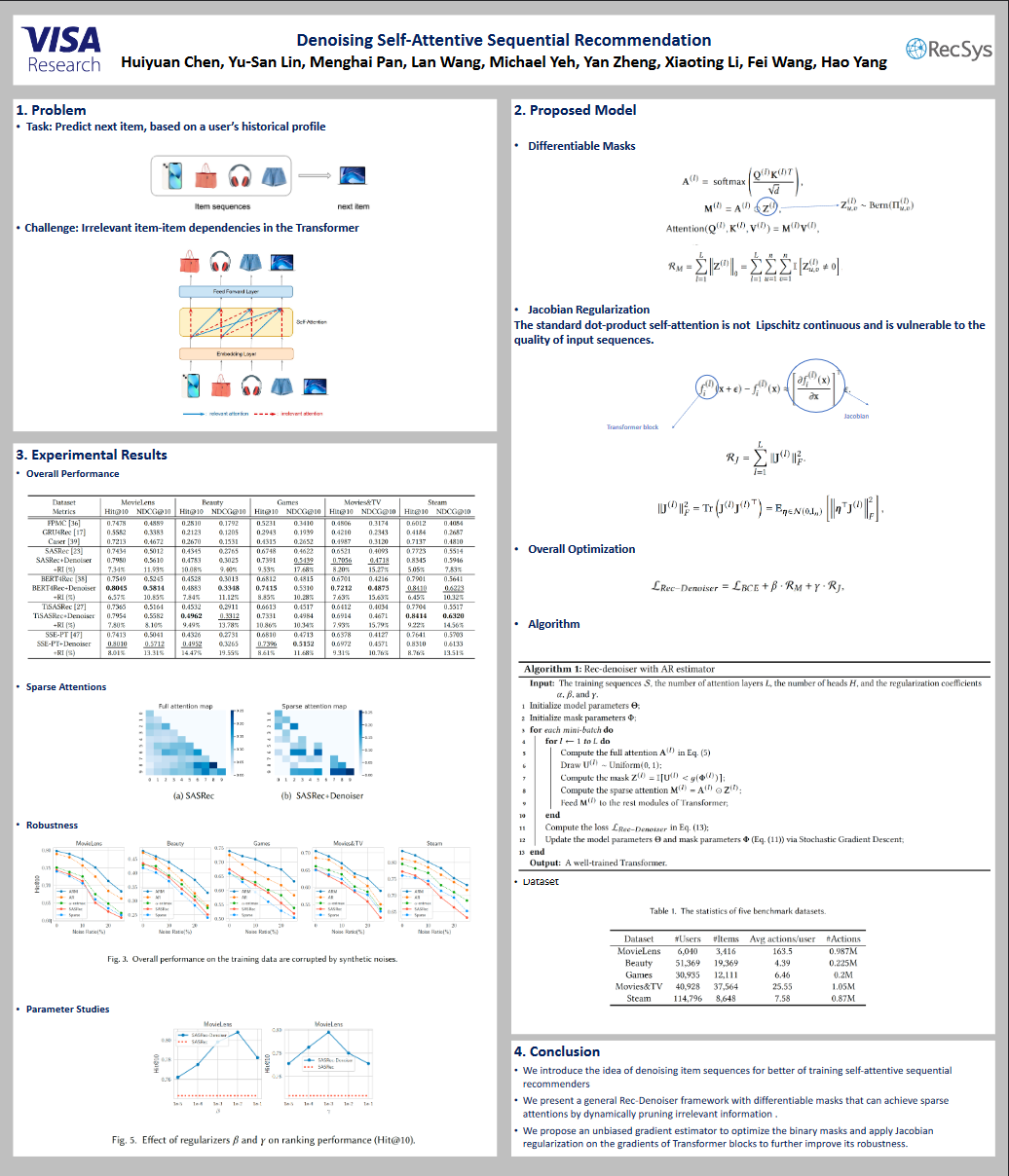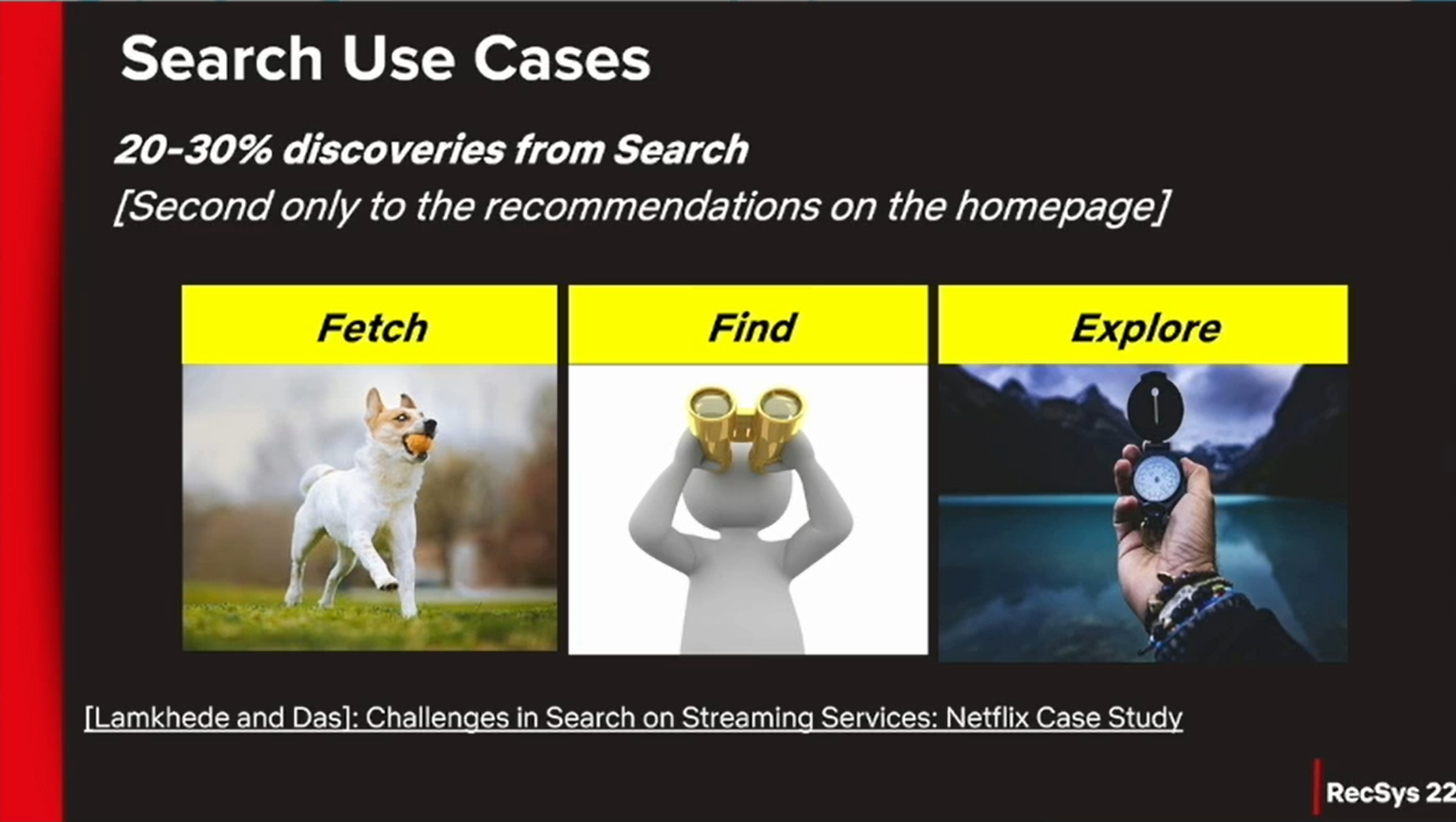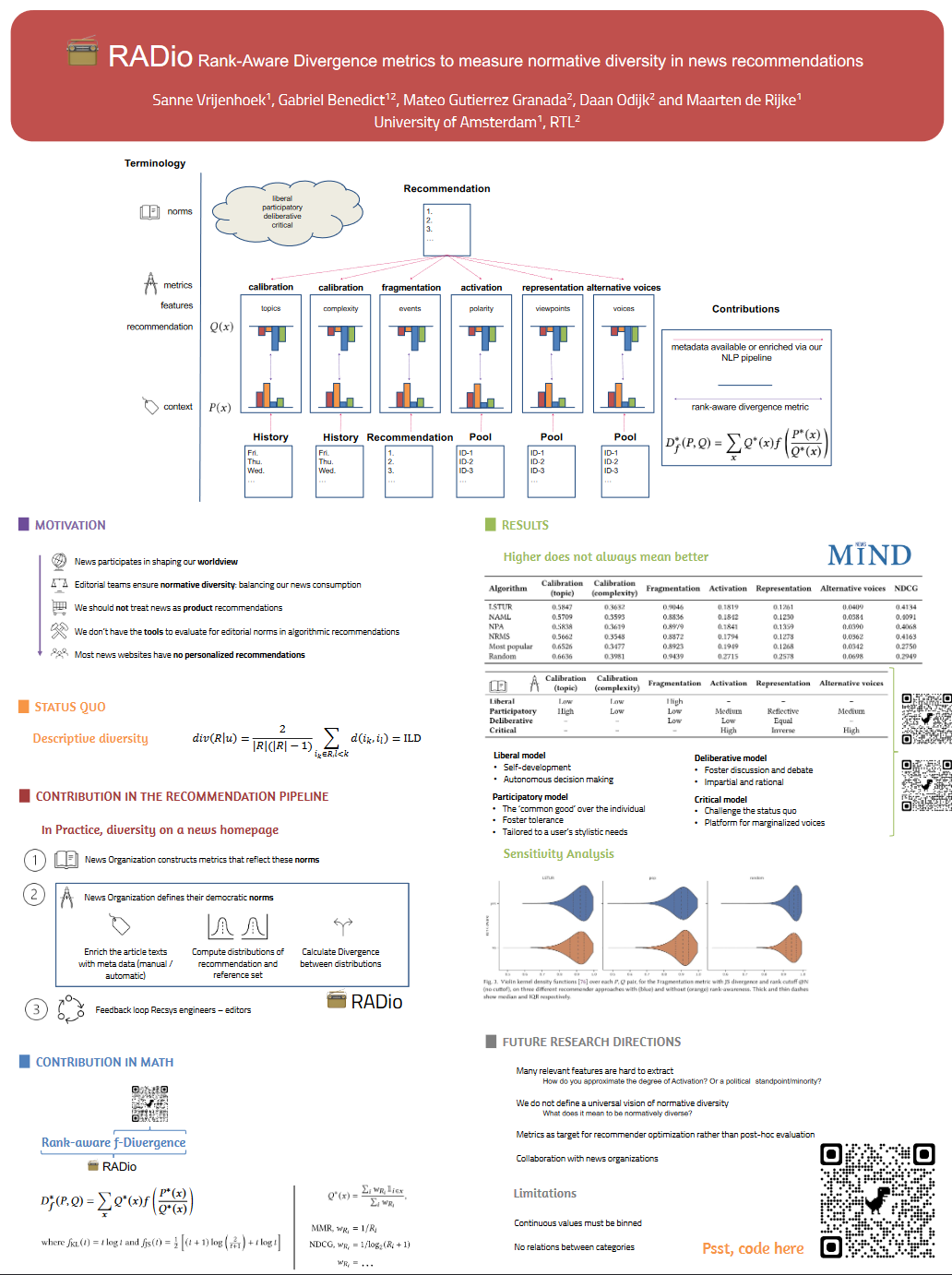Notes from ACM RecSys 2022
Notable Papers:
A Systematic Review and Replicability Study of BERT4Rec for Sequential Recommendation
Note: fancy models do not necessary provide best results across the board.
| Paper: :page_facing_up: | Talk: :movie_camera: |
Denoising Self-Attentive Sequential Recommendation
Note: differentiable masking for regularization. Not sure if this is borrowed from NLP space.
| Paper: :page_facing_up: | Talk: :movie_camera: |

Modeling Two-Way Selection Preference for Person-Job Fit
Note: useful for two-way marketplaces.
| Paper: :page_facing_up: | Talk: :movie_camera: |
Augmenting Netflix Search with In-Session Adapted Recommendations
Note: Useful for QUIQSearch in the future.
| Paper: :page_facing_up: | Talk: :movie_camera: |

Exploring the longitudinal effects of nudging on users’ music genre exploration behavior and listening preferences
Note: longer term user modeling instead of session based user modeling.
| Paper: :page_facing_up: | Talk: :movie_camera: |
RADio – Rank-Aware Divergence Metrics to Measure Normative Diversity in News Recommendations
Note: Useful for QUIQSearch in the future.
| Paper: :page_facing_up: | Talk: :movie_camera: |

Industry Chatters:
Industry vs Academic Skew
- Industry prefer fast models for real time inference. Academics favor larger/complex models.
- Industry paper architectures are highly bespoke to their software application. Academics are limited to MovieLens, Amazon Reviews, or very low sample survey data
- Transformers (BERT4Rec) still dominates session based topics, but it’s results does not apply across different datasets.
- No one knows how to evaluate embeddings. Dimensionality reduction does not work.
RecSys/Search/Data Science Team Organizations
- Applied Scientists/Data Scientists to Software Engineers ratio ranges from 1:1 at the lowest to around 8:1 for most companies.
- RecSys/Search & Discovery/Data Science teams are usually built on top and supported by data engineering and platform engineering teams.
- Even split between data scientists embedded in product teams lead by PM vs RecSys/Search & Discovery/Data Science teams lead by tech lead.
ML Engineering/Ops/Infrastructure
- Big skew between infrastructure maturity between smaller and bigger companies. Few builds in-house tools. Most buys and stitch together in-house platform.
- Low adoption of NVIdia’s in-house frameworks.
- It is still common to run batch jobs over Spark/Ray on a hourly/daily/weekly basis for candidate generation and persist results in Redis.
- Lot’s of interest for streaming/real time recommendation, but the challenge is support in applications and data engineering. AdTech companies don’t face such issues.
Tutorials:
Tutorial: Hands on Explainable Recommender Systems with Knowledge Graphs
| Video: :movie_camera: | Code: :floppy_disk: |
Tutorial: Training and Deploying Multi-Stage Recommendation System
| Video: :movie_camera:](https://vimeo.com/749421236) | Code: :floppy_disk: | Event: DLI Event – NVIDIA. Event code: DLI_XLAB_SR22 |